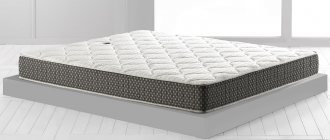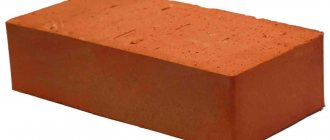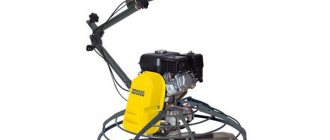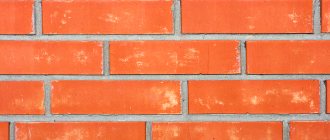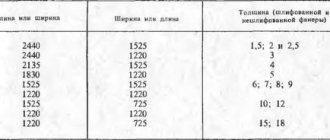It happens, and often, that the model of washing machine you liked in the store does not fit into a small bathroom or hallway. Alas, we have to look for something more compact, now focusing mainly on dimensions. Although the sizes of washing machines have some standards, they are still quite varied. Moreover, a washing machine is a piece of equipment that often has to be chosen based on its dimensions and not on its performance characteristics. We will talk about how to find one that will confidently fit into the apartment space allocated for it in this article.
In this article: [Hide]
- Frontal and vertical models: the main differences in dimensions Front-loading machines are the most popular
- Top-loading machines – compact and flexible to install
- Choosing a washing machine by size: specific recommendations
- Video. How to choose a washing machine
What sizes can there be?
When choosing household appliances, you have to take into account a set of characteristics, including the area of the kitchen bathroom or hallway where it will be installed.
Today on the market, depending on the size, there are several types of washing machines:
- full-size: height – 85-90 cm, width – 60-85 cm, depth – 60 cm;
- narrow: 85 x 60 x (35-40) cm;
- compact: (68-70) x (47-60) x (43-45) cm;
- built-in: (83-85) x 60 x (54-60) cm.
Washing machine
Top loading
Such washing machines are chosen by residents of small-sized housing - the minimum dimensions of modern devices are only 60 x 40 x 56 cm with a load rate of 4.5 kg of dry laundry. They will fit even in a cramped bathroom or kitchen.
The standard sizes of such top-loading washing machines are slightly larger - with equal width and depth, they are 25 cm higher, so they can hold up to 6 kg of laundry.
In this category of household appliances, there are also large-sized appliances that can wash 5.5-6 kg at a time. With similar width and depth, the height reaches 1 m.
What you need to know when choosing machine dimensions
Now the characteristics of washing machines are the main criterion when choosing your new assistant. You should know that with acceptable and efficient spin and wash performance, you still have a choice between models of different sizes. The dimensions of the machine - height and width - are secondary factors that will give you the opportunity to place an automatic washing machine in the space allocated for it. The only factor that has no effect on the purchase of a machine is weight.
In order to find a washing machine that will suit you according to the necessary criteria, you must:
Prepare a place for future household appliances, measure the width, height and depth of the niche;- Solve the issue with the type of machine (vertical or horizontal (front) hatch opening). Your decision will depend on which room (bathroom or kitchen or other room) the washing machine will be located in and the availability of free space around it;
- Write down the dimensions of the washing machine and all the functions necessary in your home that you require from the design on paper or wherever you like and go to a household appliance store.
Sales consultants of any stores will immediately advise you on the machines that are suitable for your needs, which will be equipped with all the necessary parameters.
Types of washing machines and their sizes
Horizontal (front) loading automatic washing machines
The dimensions and classification of existing structures today are as follows:
- Full size . Their height is from 0.85 to 0.9 meters, width is from 0.6 to 0.85 meters, depth is 0.6 meters, and the load of things in kilograms is from 5 to 7;
- Narrow. Height 0.85 meters, width 0.6 meters, depth from 0.35 to 0.45 meters, and load from 3.5 to 5 kg;
- Mini . Height is also 0.85 meters, width 0.6 meters, depth from 0.32 to 0.35 meters, loading of things from 3.5 to 4 kg;
- Compact . Height from 0.68 to 0.7 meters, width from 0.47 to 0.6 meters, depth from 0.43 to 0.45 meters, loading of things from 3 to 3.5 kg;
- Embedded . Height from 0.82 to 0.85 meters, width 0.6 meters, depth from 0.54 to 0.6 meters, loading of things from 4.5 to 5 kg.
The drum of the narrowest washing machines can accommodate up to 3.5 kilograms of clothes, while the depth is only 0.32 m.
A large number of modern models are produced with a depth of 0.6 m. They are capable of loading from 5 to 5.5 kilograms of dry things. This option is suitable for large families of 4 or more people.
If the width of the drum is 0.6 meters, then it can accommodate up to 6 kilograms of things.
However, the question you need to think about is whether you can fill it completely every time you wash it? Do you need such a large, spacious washing machine just for winter down jackets, coats and blankets?
Mini machines, with their miniature size, have almost the same technical characteristics as conventional automatic machines, however, they are subject to a high level of vibration during the spinning process due to their small footprint.
We think you should pay attention to the presence of built-in counterweights in such machines. Thanks to such counterweights, the weight of the machine will be approximately the same as that of large-sized analogues.
Washing machines with a depth of 0.4 to 0.5 m, a height of up to 0.8 m, and a capacity of up to 5.5 kg are considered popular products. Washing structures with a width and depth of 0.8 m are equipped with a “drying” function.
In order for your washing machine to perform high-quality drying, it needs a larger drum than for the washing process. This may lead to a choice in favor of a larger machine.
When you choose a washing machine with a width of 0.6 meters, you should pay attention to your doorways because they also need to be at least 0.6 meters.
After all, if the machine is wider than your doorway, then you will have to resort to removing the side panels from the washing machine and the trim from the door frame.
When you rely on the width of the space allocated for the washing machine, you need to remember that you need to fully open the loading hatch on the front panel.
Top-loading automatic washing machines
Classification and characteristics of these machines:
- Large-sized . They have a height of 0.85 to 1 meter, a width of 0.4 meters, a depth of 0.6 meters, and a load of laundry from 5.5 to as much as 7 kilograms of dry clothes;
- Ordinary (standard ). Height from 0.6 to 0.85 meters, width 0.4 meters, depth 0.6 meters, load from 4.5 to 6 kg.
Washing machines with a vertical loading type are born in the order of 100 designs per certain period, which cannot be said about ordinary washing machines with a horizontal type, which are stamped in 1000 copies. This is due to the usual general appearance and dimensions of automatic machines.
When comparing washing machines by size and capacity of things, you can immediately note that top-loading machines save space, namely width. The width of these models is as much as 20 centimeters less than that of front-type machines. It's all because of the drum, or rather the location of its rotation.
In vertical washing machines, the drum is mounted on two (side) bearings and placed longitudinally. Some experts believe that mounting on two bearings is a certain technological advantage that machines with a horizontal loading type do not have.
Washing machine weight
Absolutely all technical characteristics of automatic washing machines will in any case affect one more parameter item - weight. The question is brewing, how much does an ordinary standard machine weigh? The average weight of the machine is from 50 to 60 kilograms. And there is practically no difference between models of different sizes. This depends on the fact that the weight of the motor, counterweight and drum will be basically the same. The smaller the washing machine, the larger the counterweight, which will even out the weight statistics of the device.
Important! The greater the weight of the washing machine, the less noise and vibration it has during the washing and spinning processes.
Disadvantages of compact and narrow designs
Compact or small-sized washing machines, as a rule, appear in the apartments and houses of people who are puzzled by the issue of free space. However, this is an argument in favor of such small-sized assistants, since there will be savings in terms of space, but you will still have to spend money.
Disadvantages of small-sized washing machines:
The cost of compact models is slightly higher than that of conventional machines;- The quality of washing is low, depending on the class declared by the manufacturer;
- The spin quality is low due to the small size of the drum;
- The drum can hold from 3 to 3.5 kilograms. For example, you will try with great diligence to load a double set of bed linen into such a drum, since its weight is approximately 3.5 kg;
- High level of vibration during the spin process;
- High level of hum (noise) when washing;
- Due to such strong vibration, the elements of compact washing machines wear out quickly.
If you are wondering how long a small-sized machine can last you, then it depends on how often you wash and how many things you put in it.
Front loading
Front loading machines are in higher demand. Washing machines in this category are:
- full size;
- narrow;
- compact;
- built-in
The standard dimensions of such machines are: height – 85 cm, width – 60 cm, depth – 60 cm.
When installing equipment, you need to provide space both directly in front of the door and behind the back wall, since at least 15 cm will be required for supplying communications.
Flaws
- Embedding difficulties. Built-in top-loading washing machines require special furniture - it has to be made to order. Due to the opening of the top lid for storing laundry, it is not possible to install the vertical version in the usual way. It should be placed under a tabletop with a hinged lid, if you find a modification of low height.
- High price. They are assembled in Europe, hence the high cost. If the device breaks down, you can’t fix it that easily—you’ll have to order a spare part from the manufacturer. It's long and expensive.
- Small assortment. The demand for them is not yet great, and therefore the assortment is not encouraging. If we compare the share of “verticals” in the assortment of an average specialized store, then it is 15 percent, no more.
- The top cover cannot be used as a shelf. For front-facing cameras, the top panel serves as a platform for placing powders and other detergents or as a stand for something light.
Dimensions of narrow washing machines
Responding to the needs of consumers living in small apartments and studios, manufacturers of modern washing machines produce units with a depth of 35 and even 32 cm. Their height is also small - no more than 70 cm, so you can load up to 3 kg of dry laundry.
When purchasing this household appliance, it is necessary to take into account the features of its operation. The low mass does not allow creating the necessary counterweight, which becomes especially noticeable when spinning at high speeds, so they can vibrate and shift during operation, hitting furniture located nearby.
Standard washing machine sizes
Drum volume
The average drum volume of modern washing machines ranges from 3-7 kg, but there are also models with a capacity of up to 10 kg.
When choosing equipment, you should focus on the composition of the family and the amount of laundry that accumulates until each subsequent wash.
For example, if two spouses live in a house, the best option is an automatic washing machine with a loading capacity of up to 5 kg; if there are more family members, then more dirty clothes will be collected.
Of course, the capacity parameter proportionally affects the dimensions of the equipment. And a washing machine with a drum capacity of 10 kg will require more space, but at the same time, it eliminates the possibility of washing several batches a day, and this saves not only physical effort, but also electricity and resources.
Another nuance that requires attention is the minimum load. Most people do not take this into account and when washing one pair of socks and a T-shirt, which is significantly less than the minimum weight, they also resort to using an automatic washing machine. This procedure is detrimental to the mechanism, and it quickly wears out, which in the future affects the service life of the equipment.
For installation under the sink
Installing the machine under the sink can significantly save space in the bathroom. Today you can easily choose a washing machine for almost any plumbing fixture. The depth of such machines is 44-51 cm, the width is selected for the sink - 50-60 cm, and the height can be only 54-60 cm.
For such minimalism you have to pay, literally and figuratively:
- the price of non-standard cars is noticeably higher;
- the small size of the loading opening will not allow you to put large things into it (blankets, jackets, etc.);
- due to the small capacity of the tank, the quality of washing suffers;
- the lack of a full counterweight reduces stability.
If possible, it is recommended to raise the sink higher so that a 70 cm high washing machine, which has the best technical characteristics, can be placed under it.
Unit height
The basic size of the body of most washing machines is 85 cm. It can be increased to a standard size of 89-90 cm using built-in adjustable legs. Their height is adjusted to the needs of the owner. With the help of supports you can also compensate for minor unevenness in the floor, because the machine must be fixed in a strictly horizontal position.
Important! The legs bear the weight of the entire apparatus, which is especially noticeable during vibration during operation. Over time, supports can wear out. Therefore, experts do not recommend twisting them to the maximum.
There are special rubber pads on sale. They allow you to reduce the transmission of vibration from a working washing machine to surrounding objects. The compactness of the room sometimes limits the owner in terms of the vertical size of the built-in equipment. And a low machine can successfully fit even under a sink with an edge drain. For these purposes, there are devices up to 70 cm high on sale.
Manufacturers also offer compromise options with a size of 81 cm or so. After all, sometimes the machine needs to be placed under a tabletop, hanging shelf, etc. All offers with height restrictions are valid only for front-loading models. Be sure to add 40-45 cm to the height of vertically oriented units. This is the size of the lid. It should open freely.
Built-in machines
Such washing machines are installed in the kitchen. Front-loading units are used for this purpose. Typical dimensions of built-in machines range from:
- height – 74-84 cm;
- width – 57-60 cm;
- depth – 56-60 cm.
Manufacturers of household appliances and kitchen furniture coordinate their sizes among themselves. However, when choosing a machine model, you should take into account the gaps when installing on the top and sides.
There are washing machines that are installed under the countertop or are completely located in the kitchen unit. Structurally, they are very similar, but the machines of the second type have a recess on the back wall for the plinth.
When installing any washing machine, you can slightly change its height by 2-4 cm. To do this, you can unscrew the legs designed to dampen vibration that occurs during operation.
What you need to know when placing a washing machine
Requests for the size of the machine should depend on the room in which you want to place it.
In asymmetrical rooms and new buildings
If you want to choose a washing machine for a new apartment in a new building, or your apartment is undergoing a major renovation, then your only problem is communication for supplying and draining water. Here size doesn't matter.
Then you can allow your thoughts and creative fantasies to create a convenient and comfortable combination, for example, you can install a front-loading washing machine, and install a hanging cabinet above it.
In this cabinet you can store various laundry products in the form of powders, bleaching, detergents and disinfectants, as well as other amenities that you will need during the washing process.
As pediatricians advise, place all household chemicals on the top cabinets to prevent the products from getting into the hands of children. The best option would be to lock such cabinets with a key.
Modern designers today design asymmetrical bathrooms, in which the angles are not 45˚, but approximately 50˚ to 70˚.
If your new apartment has exactly these corners, then you should wonder whether your new washing machine can be installed in the chosen corner, and whether other pieces of furniture that will suit your interior will fit.
Modern architects can create another additional room specifically for a washing machine - it can fit into it without any problems exactly in size, and such a small room can also be for a drying machine or ironing board, etc.
Standard bathrooms with an area of 4 square meters
In ordinary bathrooms the area is from two to three square meters; in such bathrooms, as they say, “every centimeter counts.”
The best and most comfortable option would be to install a washing machine in a corner, of course, if the width of the free space in the corner is more than 60 centimeters.
Why more? Because additional free space is required for hoses and drainage. You also need space for sockets (from 2 to 5 cm), because you won’t be able to press the machine tightly against the wall due to the convex plugs, and let’s not forget to take into account the width of the baseboards.
In such ordinary bathrooms, the best solution would be to install a front-loading washing machine under a flat sink, which is equipped with a special drain and siphon. The drain hole should be located on the side wall of the flat sink.
The width of this machine with horizontal loading should be up to 0.6 meters, since flat washbasins are also produced with a width of 0.6-0.62 meters. A little higher than the washbasin, you can place a mirror and install a shelf on which you can put washing accessories, or hang a cabinet.
If your bathroom cannot accommodate even 60 cm, then all you have to do is turn your attention to vertical-loading washing machines. The width of such machines is only 40 cm, which can fit in any convenient corner of your bathroom. Above this type of machine there is the opportunity to hang a cabinet or shelves. This will only be possible if you place such shelves a little higher than the open hatch of the machine.
The best option for installing a washing machine in the kitchen
If your bathroom does not have the space or ability to install a washing machine, then pay attention to other rooms. For example, the kitchen, the machine is usually placed there, since it also has all the necessary communications for connection.
In the kitchen, the depth and width of the washing machine play an even more important role than in the bathroom. After all, the width of the washing machine is quite critical when compared with kitchen units. If your kitchen is covered with a solid countertop (cabinets, bedside tables), then in this case you need a machine with a depth and width that will be equal to the dimensions of your kitchen furniture. By the way, the height is also important; it should be slightly lower than the tabletop, from 7 to 10 cm from the level.
Even if your washing machine is very quiet, the level of hum it will produce will still reach 55 to 75 decibels. This statement was equated to daytime city noise. Therefore, we recommend not installing your washing structures to the walls parallel to which the bedrooms will be located.
Washing machine weight
Despite the differences in size, most household washing machines weigh between 50 and 60 kg.
This is due to the fact that the steel drum and counterweight have the maximum weight, which is necessary to suppress vibration, and the plastic parts account for noticeably less.
Washing machine
conclusions
When making a choice in favor of a particular brand of automatic washing machine, it is recommended in advance:
- accurately measure the maximum height, width and depth of the place where the equipment will be installed with a margin of 1 cm;
- take into account the size of doorways for transporting the unit;
- provide a space of at least 5-6 cm to the rear wall for connecting hoses to drain pipes.
When purchasing built-in household appliances, you must also take into account its height.
Subscribe to TechnoCouncil on social networks so you don’t miss anything:
